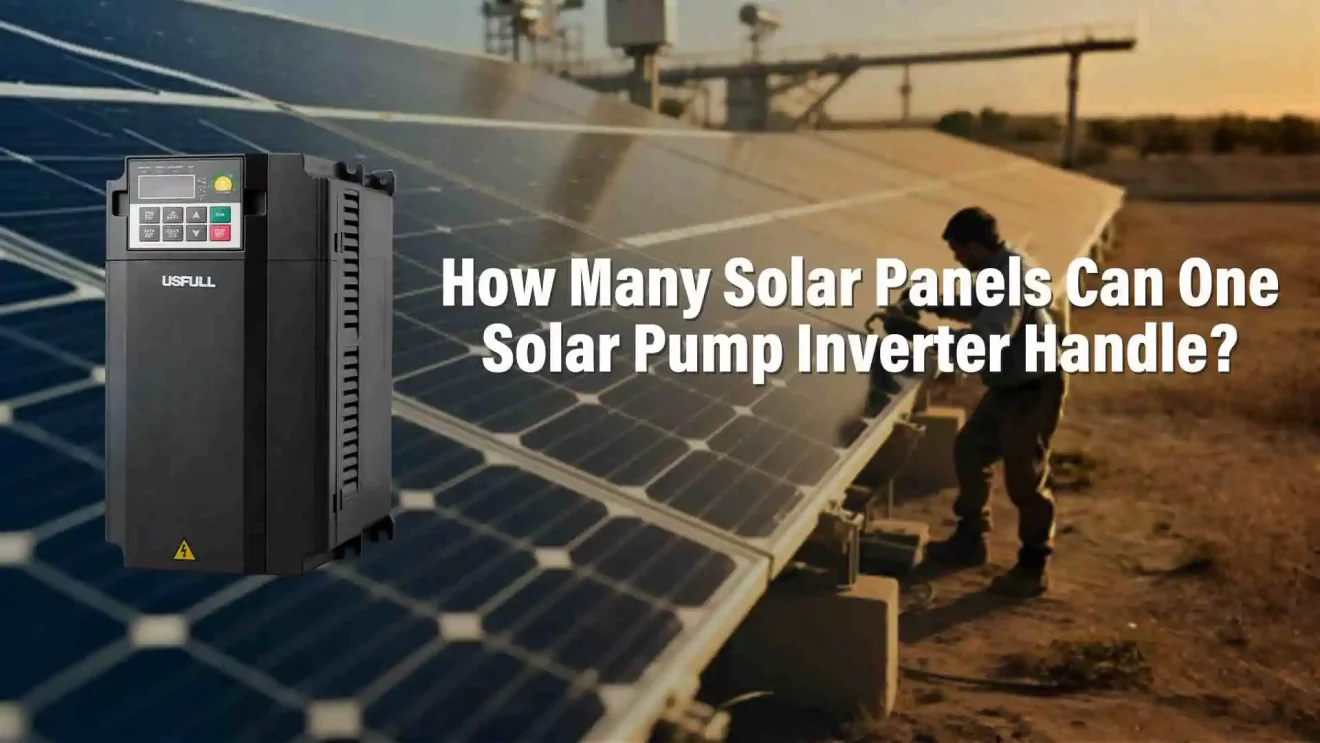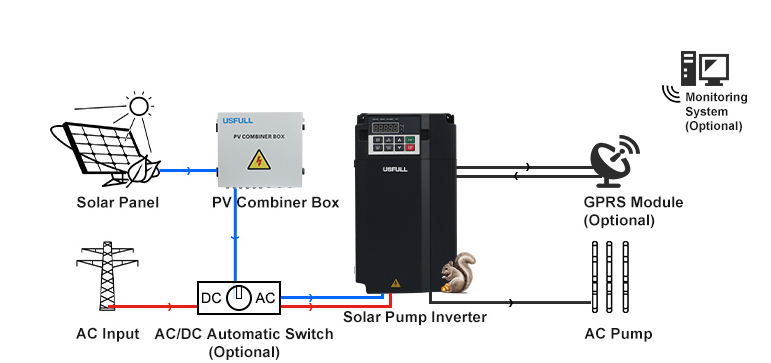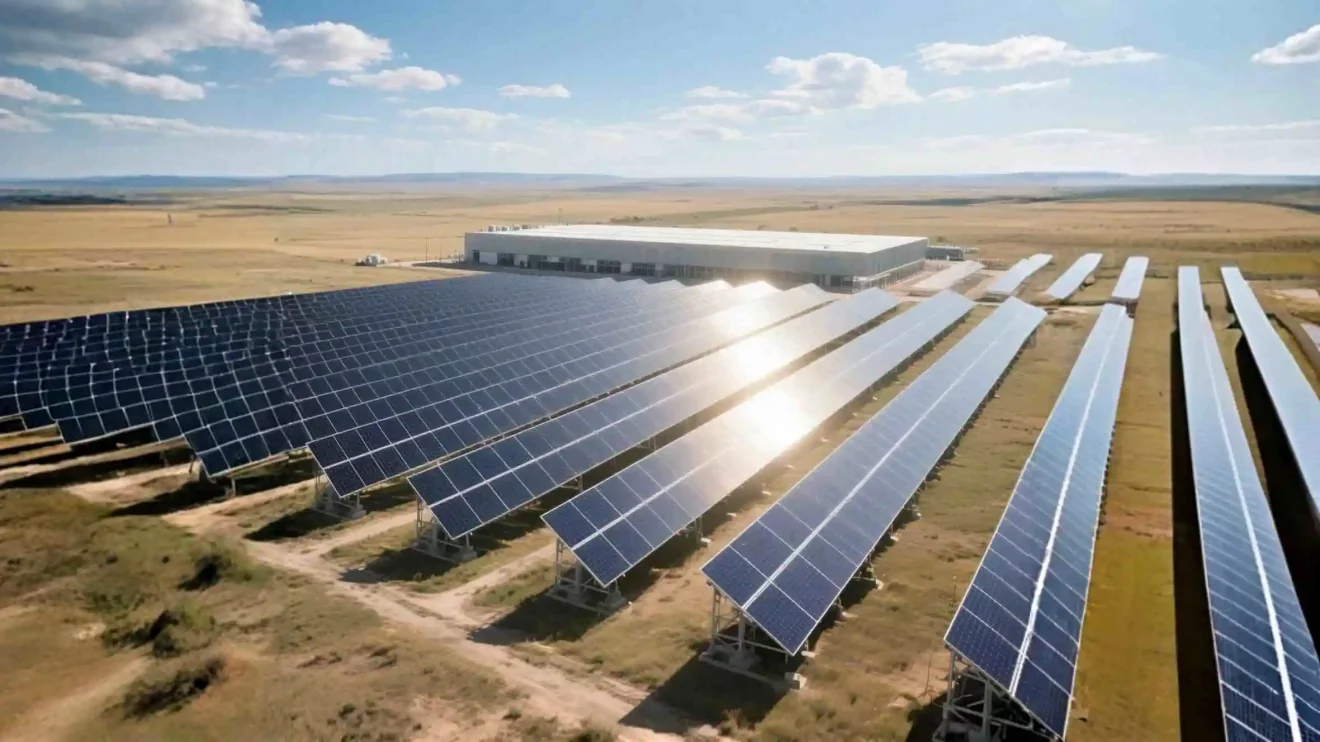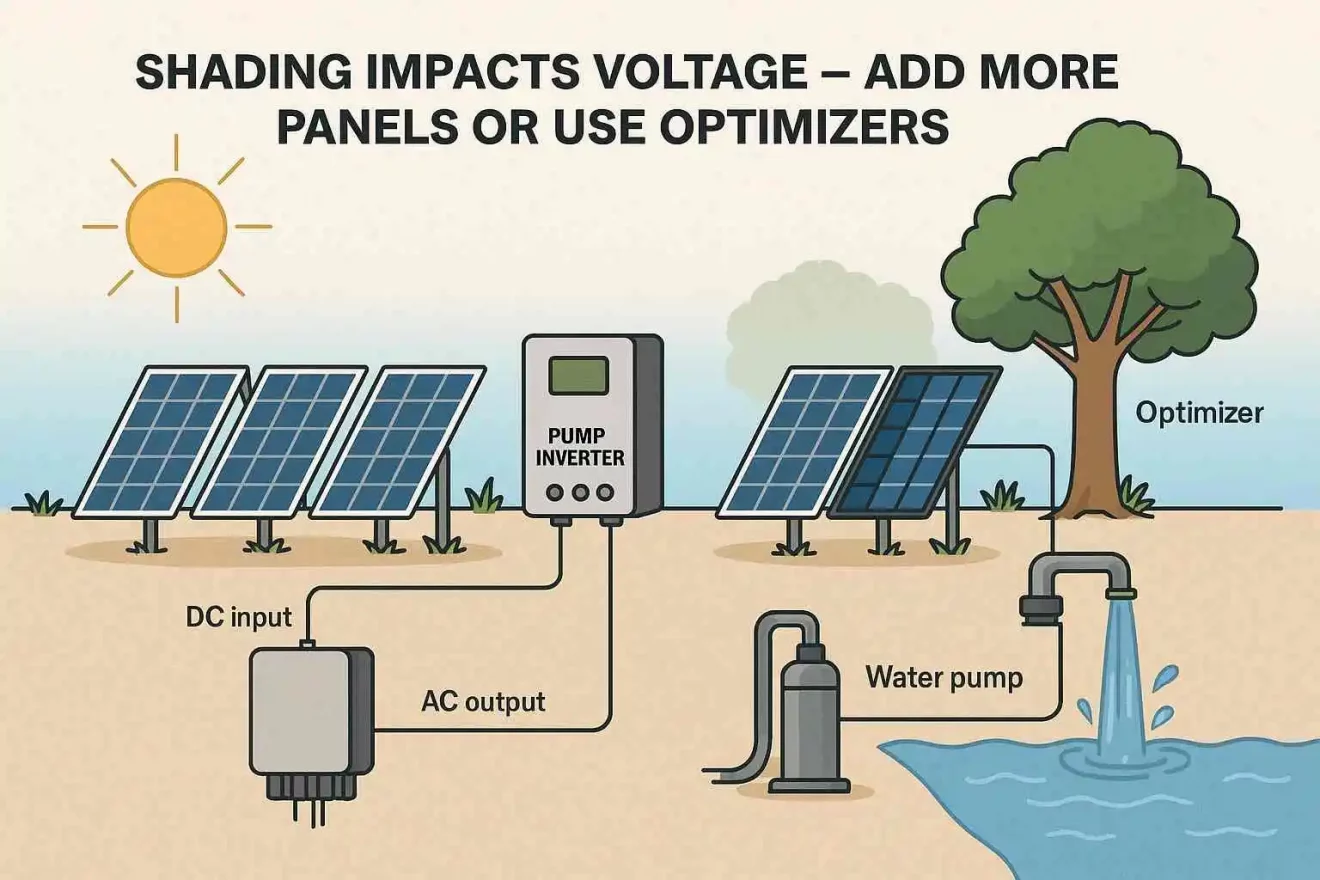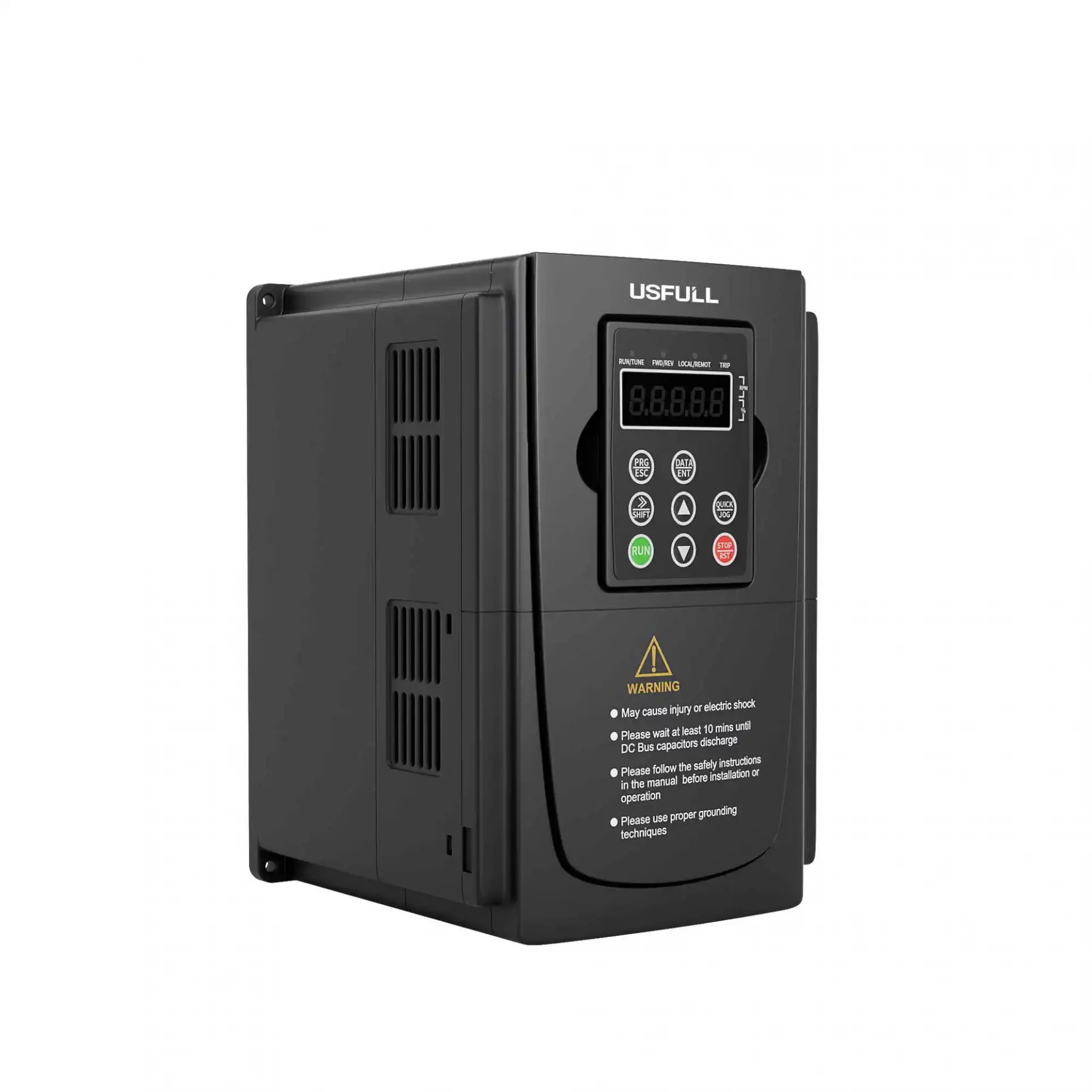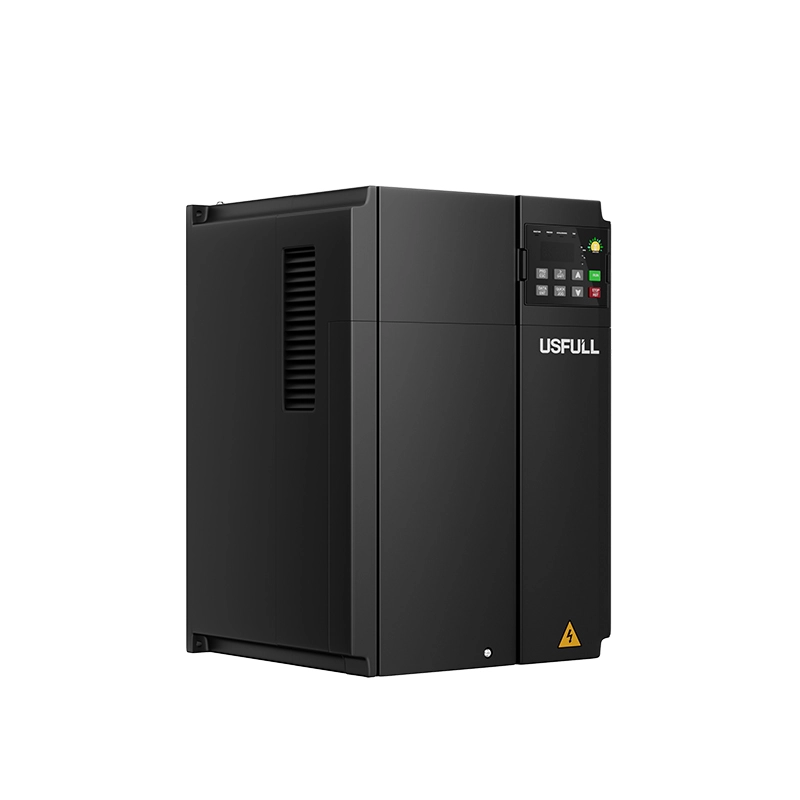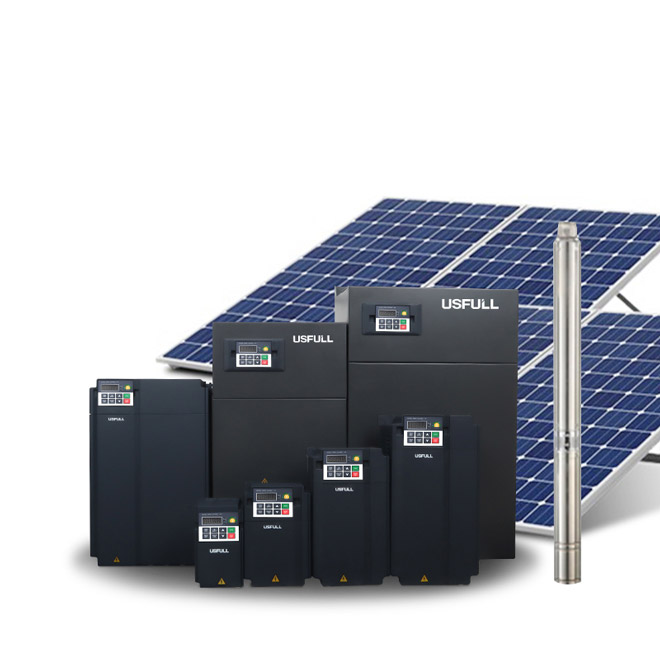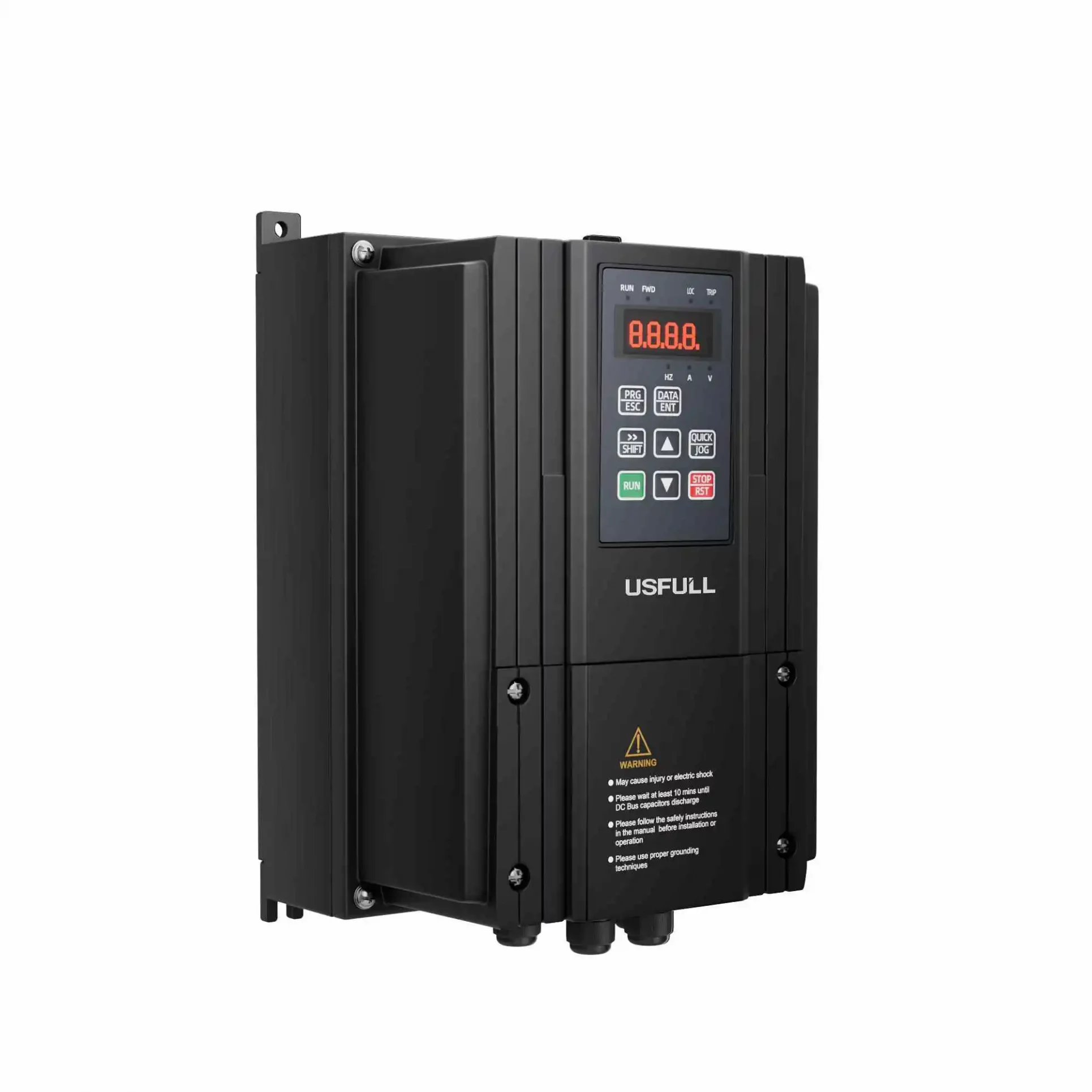When solar water pumps underperform, the culprit is often a mismatched inverter-to-panel ratio—leading to water shortage, wasted investment, and frustrated users. The right sizing strategy fixes it all.
The number of solar panels a solar pump inverter can handle depends on the inverter’s voltage input range, panel specifications, and site conditions. Correct sizing ensures efficient energy conversion, optimal water delivery, and system longevity.
Want your solar water pump to work reliably every day? Start with sizing the solar pump inverter right.
What Is the Role of a Solar Pump Inverter in a PV Water Pumping System?
A solar pump inverter converts direct current (DC) from the solar panels into alternating current (AC) used by the pump. It also regulates frequency and voltage, ensuring the pump starts smoothly, runs efficiently, and responds to variations in sunlight. Most modern inverters offer MPPT (Maximum Power Point Tracking) to optimize solar harvesting.
As a leading solar pump inverter manufacturer in China, USFULL engineers inverters for agricultural, industrial, and rural water supply projects across the globe—making compatibility with solar panels a critical factor in system design.
What Determines the Maximum Number of Solar Panels an Inverter Can Handle?
The number of solar panels an inverter can handle is dictated by three core elements:
Inverter voltage input range – Each model has a max and min DC voltage it can accept.
Solar panel output (Vmp and Voc) – The operating and open-circuit voltages determine how many panels can be wired in series.
Current capacity (Amp) – The combined output current of panels must stay within the inverter’s maximum current input.
Example: A 3kW solar pump inverter with 120–400V DC input and 10A current limit can accept around 8–10 panels (assuming each panel has 40V Vmp and 9A Imp).
Can You Connect Too Many Solar Panels to a Solar Pump Inverter?
Yes—and it’s a common mistake. Oversizing causes:
Overvoltage shutdowns
Inverter overheating
Component damage
Voided warranties
What Happens If You Use Too Few Solar Panels?
Using too few panels results in under-voltage, preventing the inverter from starting or running the pump. This leads to:
No water delivery in the morning or cloudy conditions
Inverter idle time
Wasted solar investment
For example, if the inverter needs a minimum of 150V to start but your array only delivers 120V, the pump won’t run. That’s why accurate sizing is vital. Solar pump inverter manufacturers in China like USFULL recommend consulting panel specs and environmental conditions during system design.
How to Calculate the Right Number of Panels for Your Solar Pump Inverter?
Here’s a simplified step-by-step method:
Check the inverter’s DC input range (e.g., 150–400V)
Divide the max voltage by panel Vmp to get the maximum number of panels in series
Divide the min voltage by panel Vmp to get the minimum number of panels
Ensure total current is below the inverter’s max input Amp
Example:
If a panel has 40V Vmp and 10A Imp, and the inverter supports 150–400V DC input and 15A DC current:
Max panels in series = 400 ÷ 40 = 10
Min panels in series = 150 ÷ 40 ≈ 4
Total current = If using 2 parallel strings of 8 panels: 10A × 2 = 20A (too high for 15A inverter—adjust accordingly)
Does Shading Affect the Number of Panels You Can Use?
Yes. Shading lowers voltage output, which can drop your system below the inverter’s startup threshold. This is especially critical in areas with:
Trees or buildings nearby
Cloudy weather patterns
Low sun angles (winter)
Solutions include:
Adding extra panels to maintain voltage under poor lighting
Using string-level optimizers or inverters with wide MPPT range
Changing the panel layout or orientation
USFULL’s solar pump inverters offer adaptive MPPT tracking to minimize shading losses, making them suitable for complex installation environments.
What Is the Ideal Oversizing Ratio for Solar Panels vs. Inverter Capacity?
The common industry practice is to oversize PV arrays by 10–20% above the inverter’s nominal power to maximize energy production, especially in early morning and cloudy periods.
However, for solar water pump systems, oversizing should be done within the inverter’s voltage and current limits. For example:
A 3kW solar pump inverter can handle up to 3.6kW of panel capacity
Use a combination of high-efficiency panels and smart string configuration
Solar pump inverter suppliers like USFULL provide tailored advice based on pump type, site solar irradiance, and daily water demand.
How Can You Monitor If Your Solar Pump Inverter Is Properly Sized?
Key indicators of improper sizing:
Inverter doesn’t start early in the day or shuts down midday
Pump output is inconsistent
Inverter displays voltage or current error codes
Use remote monitoring tools or onboard displays to check real-time voltage, current, and energy production. Adjust panel count or configuration as needed.
Some solar pump inverter manufacturers in China, including USFULL, offer optional GPRS/WiFi monitoring modules for real-time insights and remote diagnostics.
Sizing solar panels for a solar pump inverter is not guesswork—it’s an engineering decision. Factors such as inverter specifications, panel voltage, and site conditions all influence how many panels an inverter can handle.
To avoid the costly consequences of over- or under-sizing, work with an experienced solar pump inverter manufacturer like USFULL, based in China. With global certifications, advanced R&D, and full technical support, we help ensure your solar water pumping systems are smart, stable, and scalable.

